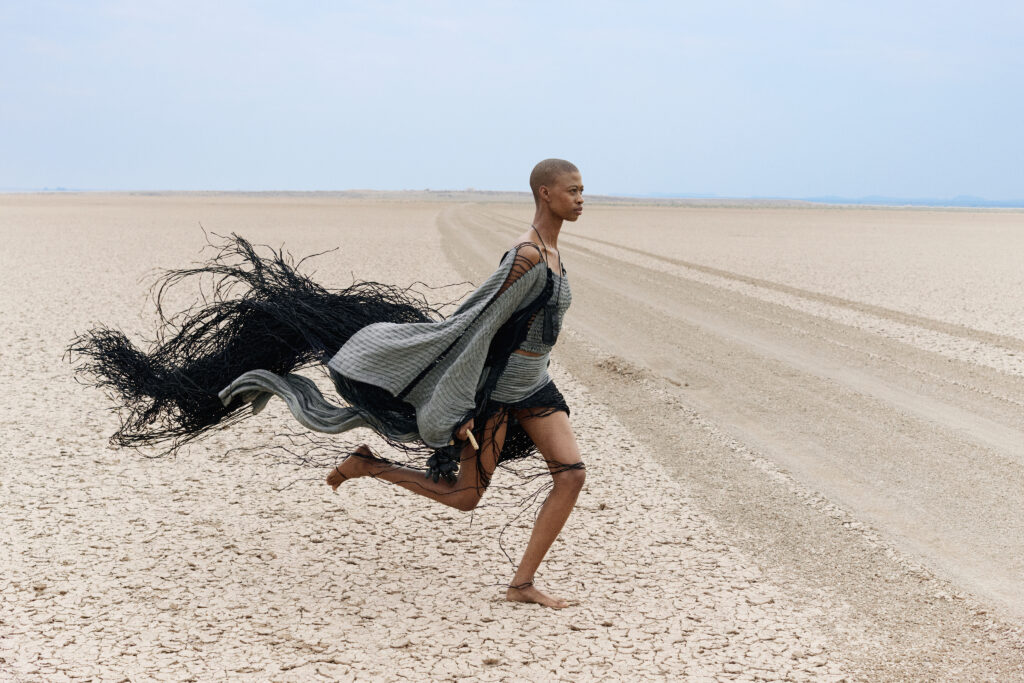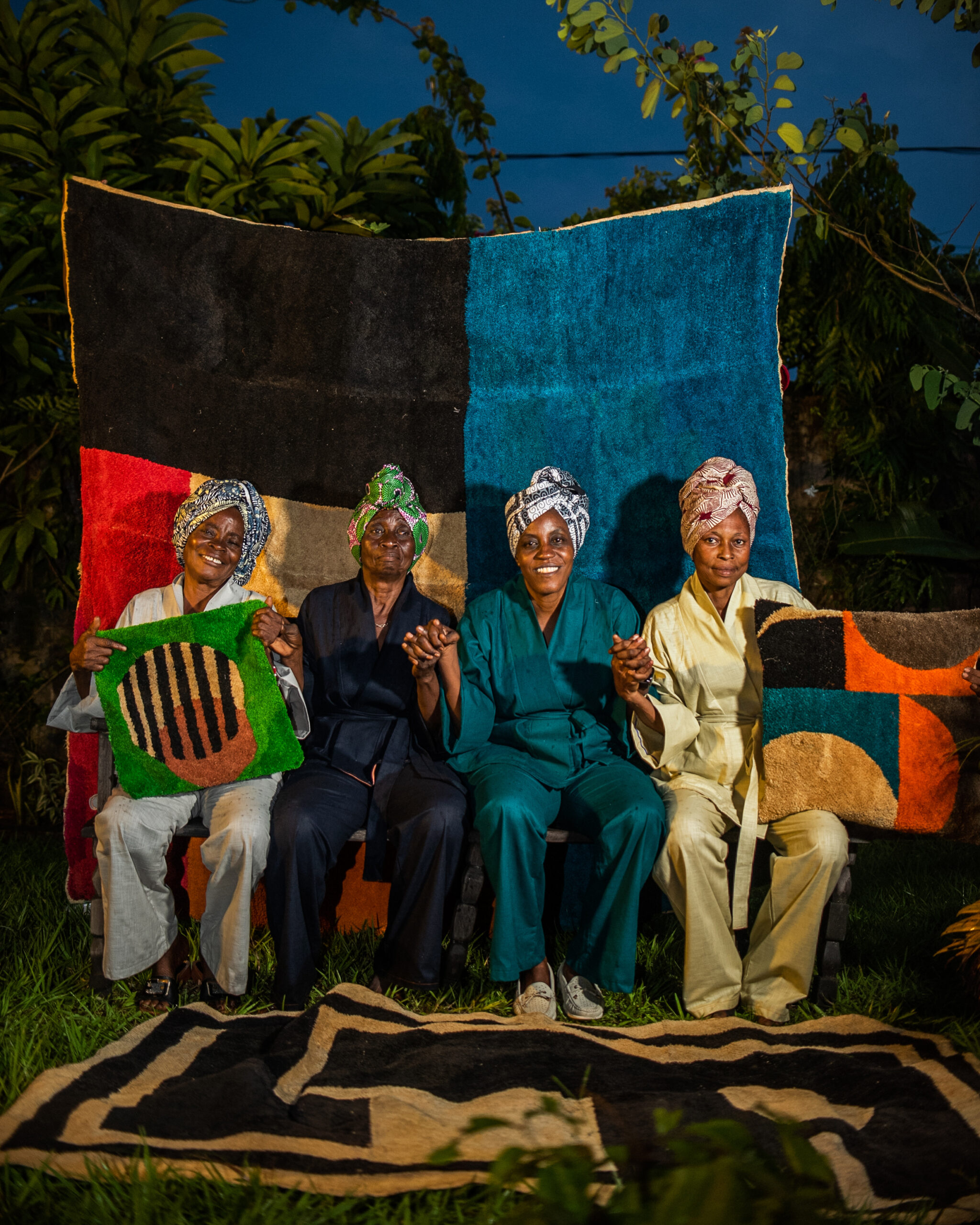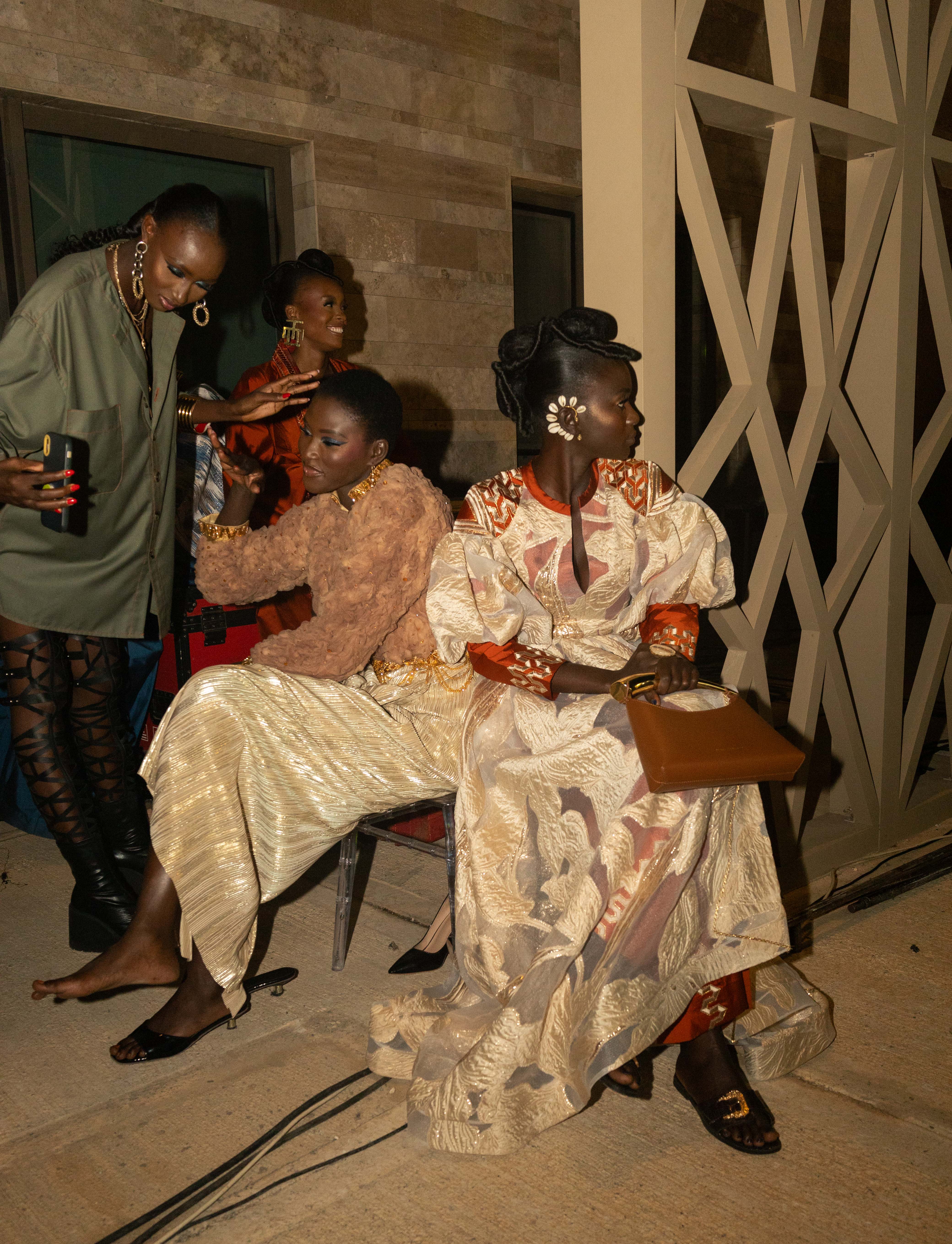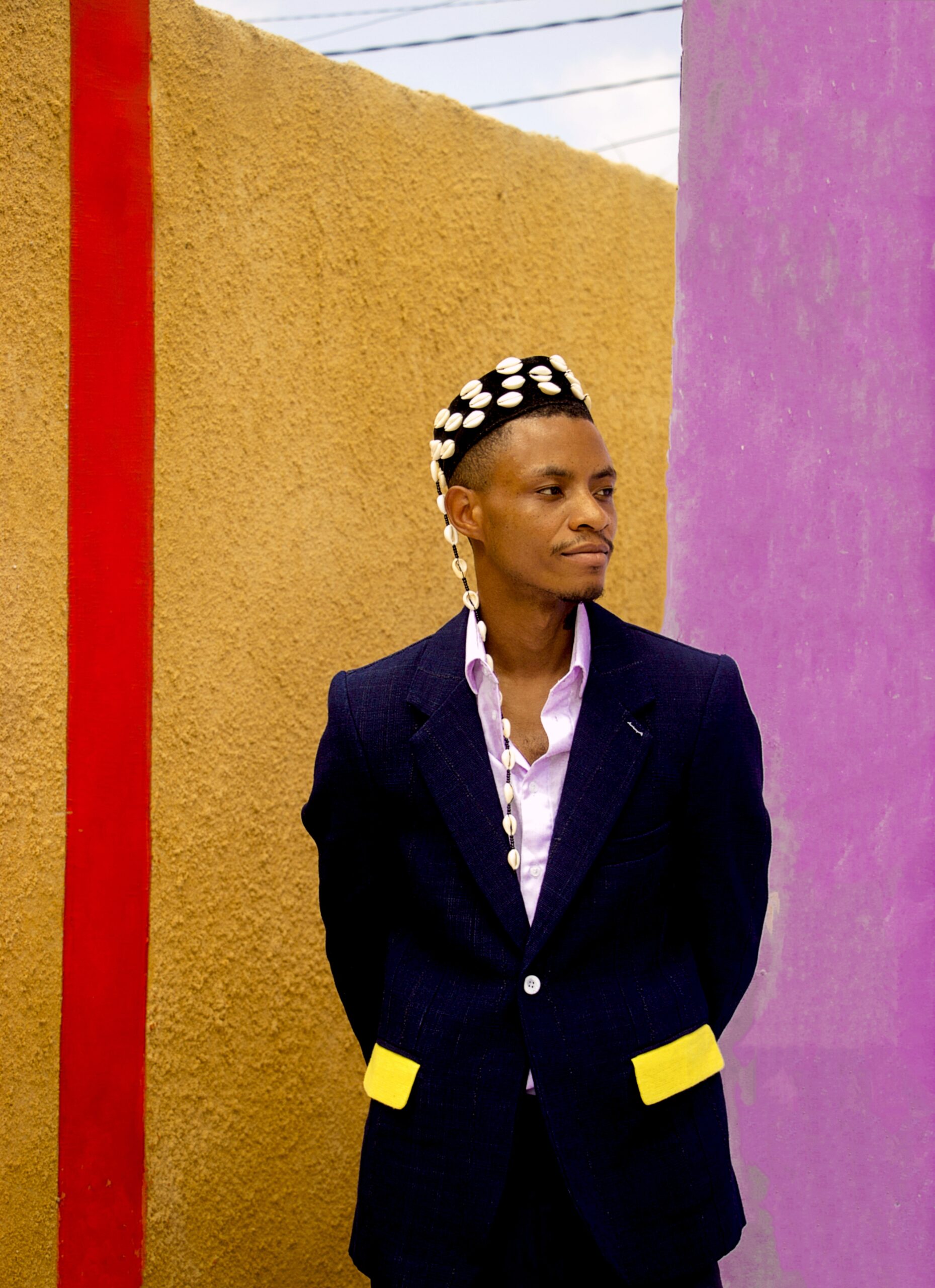
In the quiet expanse of a South African salt pan, Ilkhe du Toit found the essence of her latest collection, Salt. The setting—a shimmering, otherworldly landscape—feels like a metaphor for her approach to design: elemental, unassuming, yet profoundly impactful. Shot on location and woven with personal history, Salt is more than a collection. It’s a dialogue between textile and garment, past and present, designer and material.
Ilkhe’s work doesn’t merely nod to sustainability; it interrogates the very core of creation. Raised on a sheep farm in South Africa, her family business exported wool to European mills. Yet, as a child, the connection between the raw fiber she saw daily and the garments on her back felt distant, almost invisible. “I didn’t understand how wool became clothing,” she admits. That disconnect became the catalyst for her career—a journey to uncover, honor, and ultimately redefine the relationship between material and design.
Her collection, Salt, is a love letter to that journey. Created entirely from 100% wool sourced from Italy—ironically, the very factory her family once exported to—it demonstrates the transformative power of material-led design. “I allowed the wool to lead,” she says. “It dictated the shapes, silhouettes, and textures. I didn’t look at trends or advertisements. Instead, I started with the fabric, letting it speak first.”
That intentionality extends to every element of the collection. The salt pan backdrop wasn’t chosen for aesthetics alone. Salt, a key ingredient in the dyeing process, ties the setting to the garments in a way that feels poetic. “The pan is a place of both desolation and abundance,” Ilkhe explains. “It’s overused and infertile, yet it has its own beauty and value—a metaphor for what sustainability in design can achieve.”

Filming and photographing Salt in this space felt like a homecoming for Ilkhe. After spending over a year off-grid, disconnected from the noise of modern consumerism, she returned to South Africa with a renewed sense of purpose. “It wasn’t just about fashion,” she reflects. “It was about responsibility—understanding the impact of what we make.”
Her process is as deliberate as her philosophy. From wool to fiber to fabric to garment, every step is treated with reverence. Even the smallest details, like removing twigs from raw wool, are part of her commitment to honoring the material. The result? A collection that feels alive—textural, fluid, and deeply connected to its origins.

But Salt isn’t just a solo endeavor. Ilkhe collaborated with local women unfamiliar with fashion or textiles, teaching them the craft as they worked together to complete the collection. “We have an inherent connection to textiles,” she says, “especially as women. It’s something ancient, something we’re simply remembering.”
Ilkhe’s journey also bridges her past and present in unexpected ways. The same factory that processed her family’s wool is now a collaborator in her designs. “There’s a sense of harmony in that,” she says. “It feels like coming full circle.”
Her vision for the future is equally clear-eyed. Ilkhe advocates for what she calls “textile-led fashion,” where designers work hand-in-hand with manufacturers to develop materials that align with their creative goals. “Too often, we design first and then try to make the fabric fit. But that compromises both the textile and the garment,” she explains. “It should be a partnership, where each brings out the best in the other.”
The collection’s neutral palette, inspired by South Africa’s natural hues, reflects her belief in grounding fashion in its environment. And yet, Salt feels universal—a testament to how storytelling through textiles can transcend borders.

When asked about her future, Ilkhe’s ambitions extend beyond the runway. She dreams of creating spaces for young designers, especially in Africa, to reconnect with the source of their materials. “Africa exports so many raw textiles,” she notes, “but we’re losing the connection to the craft. If we nurture that link, the possibilities are endless.”
It’s no surprise that Salt has been compared to the sweeping, ethereal costumes of Dune. Ilkhe, who interned with avant-garde fashion icon Iris van Herpen, embraces the idea of exploring costume design. “Being surrounded by people who inspire me in this creative world only strengthens my resolve,” she says.
At just 28, Ilkhe du Toit has crafted more than a collection. She’s sparked a conversation about the soul of fashion, the role of materials, and the stories they carry. With Salt, she proves that design isn’t just about what we create but how we create it—listening to the source, respecting the process, and letting the textile lead the way.
Because in Ilkhe’s world, the story always starts with the textile.

CREDITS:
SALT by Ilkhe du Toit In Collaboration with: Cape Wools, Marzotto Wool Manufacturers, Aalto University
Textile composition: 100% Merino Wool (RWS)
Fashion and textile design by ilkhe du Toit
Photo by Liezl Zwarts
Salt FashionFilm directed by Will Venter; watch here
Styled by Bernadine Venter
Jewelry by Helaina du Toit
Models Lethabo Sara Khunou, Ludina Ngwenya, and Katlego Gontse Masike
Makeup by Nombuso Ngcobo
Retouching by Flecks Studio
Photography production by Elisma Uys-Hankekom
Antoinette Njombua-Fombad is a creative writer and author of Everything Is WITHIN. She explores the language of artistic expression and believes that style is an extension of the soul.











